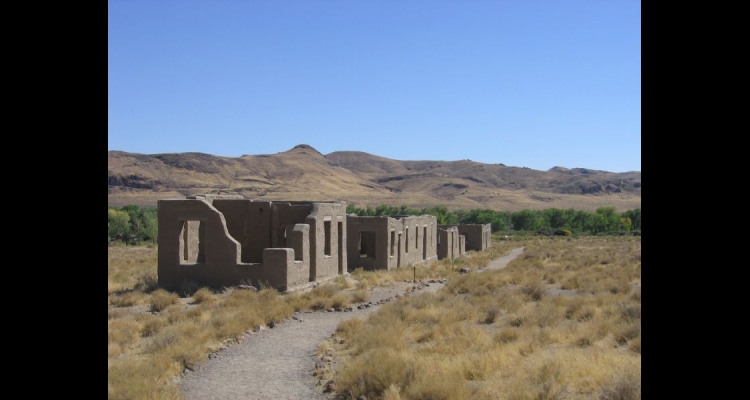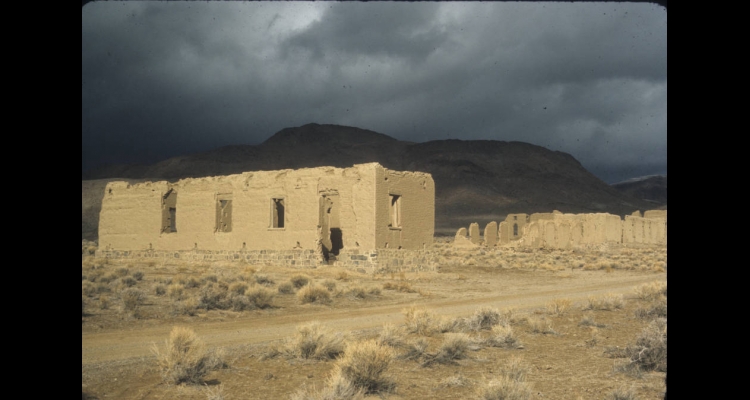Fort Churchill
Lyon County’s Fort Churchill was founded in July 1860 during the critical period of conflict between Native Americans and newly arrived settlers. Captain Joseph Stewart, recently of Fort Alcatraz, had led forces from California to fight in the second phase of the Pyramid Lake War. He then received orders to establish a fort to protect transcontinental trade and transportation routes as they extended through the western Great Basin. Stewart subsequently founded Fort Churchill on the north bank of the Carson River, to protect one of the more important lines of communication. The site was within easy reach of Carson City, Dayton, and the newly developed Comstock Mining District. While the garrison saw little action, it provided a federal presence during a critical period that included the Civil War.
The facility was named for General Sylvester Churchill, Inspector General of the U. S. Army. Fort Churchill was the first federal military installation in the area that would become Nevada, and it was the most elaborate of its kind in the state during the nineteenth century. The number of soldiers fluctuated throughout the 1860s, but they usually did not number more than two hundred. The complex consisted of over twenty buildings. African American artist Grafton Brown published one of the only early images of the fort, a bird's eye view dating to 1863. The U. S. Army abandoned the fort in 1869.
Because Fort Churchill’s buildings were made of adobe, they were vulnerable to erosion after the decommissioning. By the early twentieth century, the complex was in disrepair. The Sagebrush Chapter of the Daughters of the American Revolution obtained the fort in 1925 and began limited restoration. The Civilian Conservation Corps, a New Deal program during the Great Depression, completed a major restoration program from 1935 to 1936.
Since 1957, Fort Churchill has served as a state park. Constant repairs are needed to preserve the standing ruins. The National Park Service recognizes the site as a National Historic Landmark.
Article Locations
Related Articles
None at this time.
Further Reading
None at this time.


